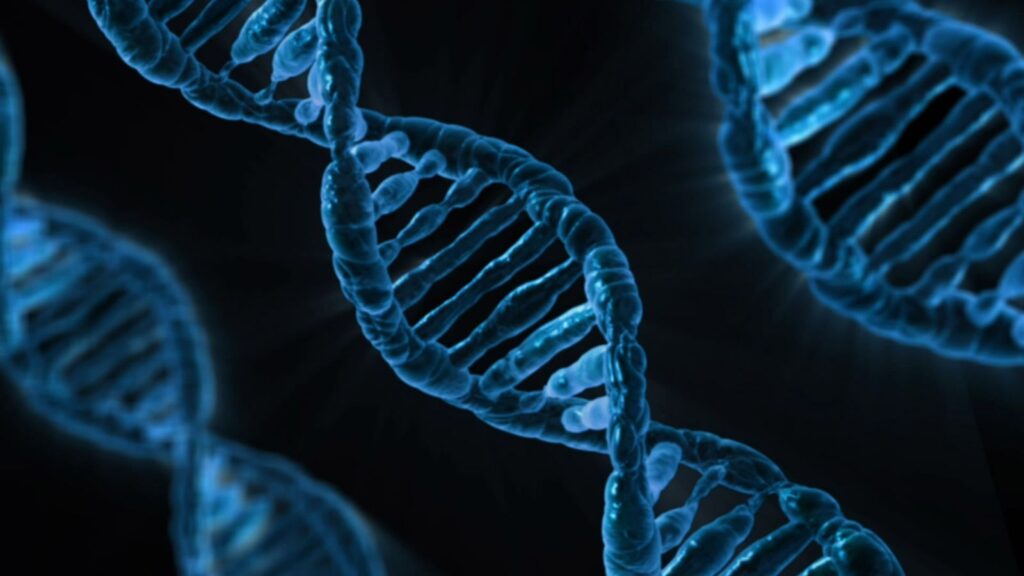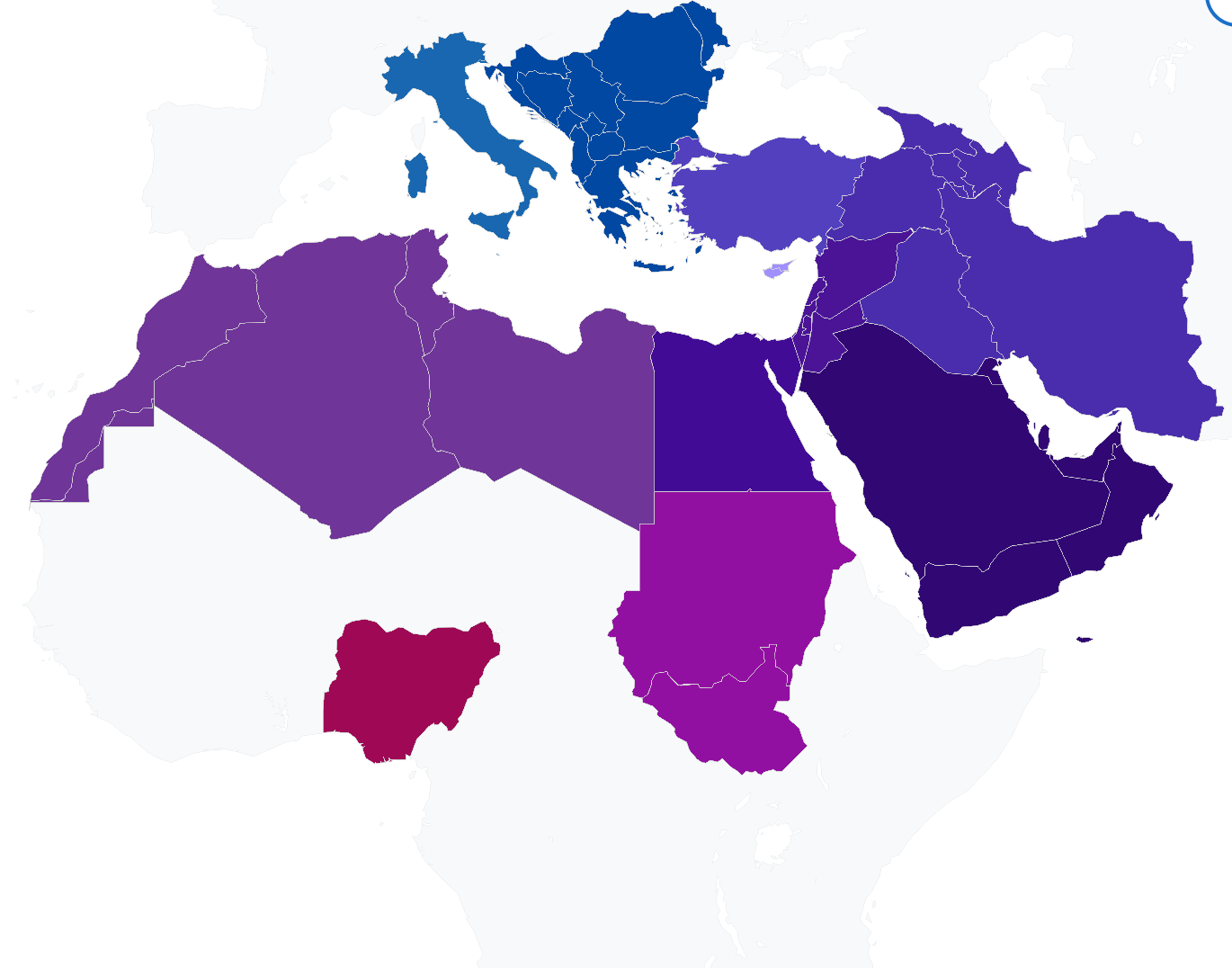
The Skinny on Genes
As part of this family legacy project, my brothers and I all decided to analyze our DNA. Despite significant differences in our physical appearances, the tests confirmed what we already knew in our hearts – full-blooded brothers all.
Rami decided to trace and write about his genetic profile in more detail to add context to the stories told by our parents. This blog post delves deeply into the paternal (Y-chromosome) lineage.
Genetic Makeup
The two largest components of his genetic makeup are not surprising:
- Levantine (including Syria, Lebanon, and Palestine) at 38.5%. This is primarily in the Idlib Governate but also the Hama, Latakia, Aleppo and Damacus Governates.
- Eastern Turkish provinces bordering Northern Syria: 49.3%.
Rami’s 23andme profile shows evidence of recent ancestry to be strongest in:
- Idlib and Aleppo governorates in Syria (Jisr al-Shughur is my parents’ home city and is located in the Idlib region 78 km north of Shaizar.).
- Hama Governate: The city of Hama is (34 km from Shaizar and Shayzar Castle ruins).
Haplotype – Male Lineage – J-M172
Rami’s paternal haplotype (Y chromosome male lineage) is the relatively rare J-M47 [previously known in the literature as J2a, J2a1, J2a4a, J2a1a]. It traces back to a man who lived less than 13,000 years ago. To better understand the J-M47 lineage, it is best to look back further at the J-M172 haplotype.
- J-M172 (the immediate predecessor to J-M47) formed between 19,000-24000 years ago. This haplogroup is found in the highest concentrations in the Caucasus and the Fertile Crescent/Iraq. J-M172 is also found to a lesser extent throughout the Mediterranean (including the Italian, Balkan, Anatolian and Iberian peninsulas and North Africa). J-M172 – The highest ever reported concentration of J-M172 was 72% in northeastern Georgia. Other high reports include Ingush 32% (between Georgia and the Caspian Sea), Cypriots 30-37%, Lebanese 30%, Assyrian, Mandean and Arab Iraqis 29.7%, Syrians and Syriacs 22.5%, Kurds 24%-28%, Pashtuns 20-30%, Iranians 23%, Ashkenazi Jews 24%, Palestinian Arabs 16.8%-25%, Sephardic Jews 29%, and North Indian Shia Muslim 18%, Chechens 26%, Balkars 24%, Yaghnobis 32% (Tajikistan), Armenians 21-24%, Azerbaijanis 24%-48%, Uygurs (34%), and Uzbeks (30.4%).
Haplotype – Male Lineage – J-M47
- J-M47: Its maximum phylogenetic diversity is currently found within Mesopotamia, the Persian Gulf, and Saudi Arabia (here is support for Dad’s claim of being descended from the Prophet – but then, of course, many Arabs make such claims). Historically J-M47 has a strong bottleneck (an extreme example of genetic drift that happens when the size of a population is severely reduced by a natural disaster such as an earthquake, famine, etc.) between 8,500 and 13,000 years ago. Some candidates for the bottleneck event and concurrent history would be:
Bottleneck (Disaster) Event Candidates – Ancient
- 14,000–12,000 years ago: Oldest evidence for prehistoric warfare (Jebel Sahaba (Nile Valley) massacre, Natufian culture warfare (Levant – Syria, Lebanon, Palestine, Jordan, Israel).
- 13,000–10,000 years ago: Late Glacial Maximum, end of the Last glacial period, the climate warms, glaciers recede.
- 12,900–11,700 years ago: the Younger Dryas was a period of sudden cooling and a return to glacial conditions.
- 11,600 years ago: An abrupt period of global warming accelerates the glacial retreat, taken as the Holocene geological epoch’s beginning.
- 11,200–11,000 years ago: Meltwater pulse, a sudden sea-level rise by 7.5 m within about 160 years.
- 10,000 years ago: The Quaternary extinction event, which has been ongoing since the mid-Pleistocene, concludes. Many of the ice age megafaunas go extinct, including the megatherium, woolly rhinoceros, Irish elk, cave bear, cave lion, and the last of the saber-toothed cats. The mammoth goes extinct in Eurasia and North America but is preserved in small island populations until ~1650 BC.
Bottleneck (Disaster) Event Candidates – Recent
- 10,000–9,000 years ago (8000 BC to 7000 BC): In northern Mesopotamia, now northern Iraq, cultivation of barley and wheat begins. At first, crops are used for beer, gruel, and soup, and eventually for bread. In early agriculture, the planting stick is used, but a primitive plow replaces it in subsequent centuries. (one can imagine famine as early groups settle down and become dependent on agriculture)
- 10,000–5,000 years ago (8,000–3,000 BC) Identical ancestors point: sometime in this period lived the latest subgroup of the human population consisting of those that were all common ancestors of all present-day humans, the rest having no present-day descendants. (This suggests a sudden die-off of other groups).
- 9,500 years ago (7500 BC): Çatalhöyük urban settlement founded in Anatolia.
- 8,200–8,000 years ago: a sudden decrease in global temperatures, probably caused by the final collapse of the Laurentide Ice Sheet, which led to drier conditions in East Africa and Mesopotamia.
- 8,200 – 7,600 years ago (6200–5600 BC): a sudden rise in sea level by 6.5 meters in less than 140 years; this concludes the early Holocene sea-level rise and sea level remains largely stable throughout the Neolithic.
- 8,000 years ago: Evidence of habitation at the current site of Aleppo dates to about c. 8,000 years ago, although excavations at Tell Qaramel, 25 kilometers north of the city, show the area was inhabited about 13,000 years ago.
- 6,000 years ago (4000 BC): Civilizations developed in the Mesopotamia/Fertile Crescent region (around the location of modern-day Iraq). The earliest supposed date for the domestication of the horse and the chicken as well as the invention of the potter wheel.
Summary
One or more of these events may have been responsible for a significant die-off of our direct ancestors between 8,500 and 13,000 years ago. From there, the lineage seems to have spread out of the Persian Gulf into modern-day Armenia, Syria, and Turkey. It’s all in the genes.
23 & Me Genetic Analysis

The genetic map of Rami Saydjari shows countries and regions of origin.
Genetic analysis of Rami Saydjari
